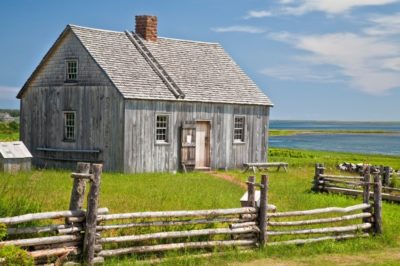 Once property is purchased for a homestead there is a sudden rush of excitement to do everything in order to settle the land. The truth is, the real planning begins at this stage and there are still many things to do before becoming a successful homesteader. Without a comprehensive plan, many homesteaders meet with the frustration of relocating poorly planned resources and causing more work for themselves in the long run.
Once property is purchased for a homestead there is a sudden rush of excitement to do everything in order to settle the land. The truth is, the real planning begins at this stage and there are still many things to do before becoming a successful homesteader. Without a comprehensive plan, many homesteaders meet with the frustration of relocating poorly planned resources and causing more work for themselves in the long run.
If this wasn’t done prior to purchasing land, it is essential to spend time in the county courthouse where the property is located. Every possible detail of the property should be clearly understood before the first shovel overturns the earth. Legal boundaries must be clear and recorded in the land survey and/or plat map. Zoning restrictions and any building permit requirements should be clear to the homesteader, as well as legally recorded rights to minerals and water. The key in this step is to eliminate any possible legal troubles in the future progression of the homestead.
When these concerns have been adequately researched and addressed, the next step is to begin the plan for the home and outbuildings. Utilities such as Google Earth, websoilsurvey.sc.egov.usda.gov, most online map software and your property survey are great references for identifying potential building sites. If the land already has buildings it may be impractical to relocate them, but it is good to know any possible troubles such as flood or fire damage that could be expected due to their location. Orientation with the track of the sun is an integral part of an off-grid solar solution so keep this in mind when plotting the location of solar-powered structures.
There are two essential things that should be done when considering the location of the buildings. The first is to spend as much time as possible on the property in many different weather conditions. The second is to lay out the driveway from the entrance to the most probable location of the home. Both of these together will help to identify future issues with rainwater drainage and erosion. The house may be located in an ideal spot, but if the driveway becomes a muddy bog during heavy rains then it either needs to be relocated or have proper drainage installed.
New Relocation Manual Helps Average Americans Get Out Of Harms Way Before The Coming Crisis
Also take into consideration the water and sewage methods to be used on the property. Connecting to local utilities requires the burying of pipes and any food crops would be best located away from these areas. Similarly, if the house sewage will be processed with a septic system, the septic field should be avoided as a location for livestock and food crops.
The waiting and observation period is a great time to test the soil and begin composting. A soil test will help identify abundant or deficient nutrients in the soil which can eventually be resolved through effective composting. At this point, elaborate composting setups aren’t essential. They can be set up in very temporary fashion and moved in the future with ease if necessary. The homesteader will want their first food crops to be as successful as possible, so investigate planting methods that will be suitable to the land.
Everyone tends to have their favorite fruits and vegetables, but keep in mind that growing conditions for these plants are not universal. Learn what is suitable for the land and climate so that the first attempt is not met with frustration. It may be possible with proper land management and composting to make the land suitable to a wider variety of crops in the future, but the best initial plantings should be done with native varieties.
The initial stage of homestead development is a great time to get to know your neighbors. Most people consider their homestead to be private and they usually don’t care much for people, vehicles or animals trespassing on their land without permission. Because of this it is not proper to enter someone else’s gate and walk up to their home for introductions. It is best to find your neighbors out on their land near a fence line. Although some homesteaders are very private people, others are very friendly and willing to offer advice and even a helping hand. Above all, it is best to have a good plan in place, but to remain flexible. Change happens quite often on a homestead and the landowner must be prepared to tackle each new challenge as it arrives.
Sign up for Off The Grid News’ weekly email and stay informed about the issues important to you
 Off The Grid News Better Ideas For Off The Grid Living
Off The Grid News Better Ideas For Off The Grid Living




